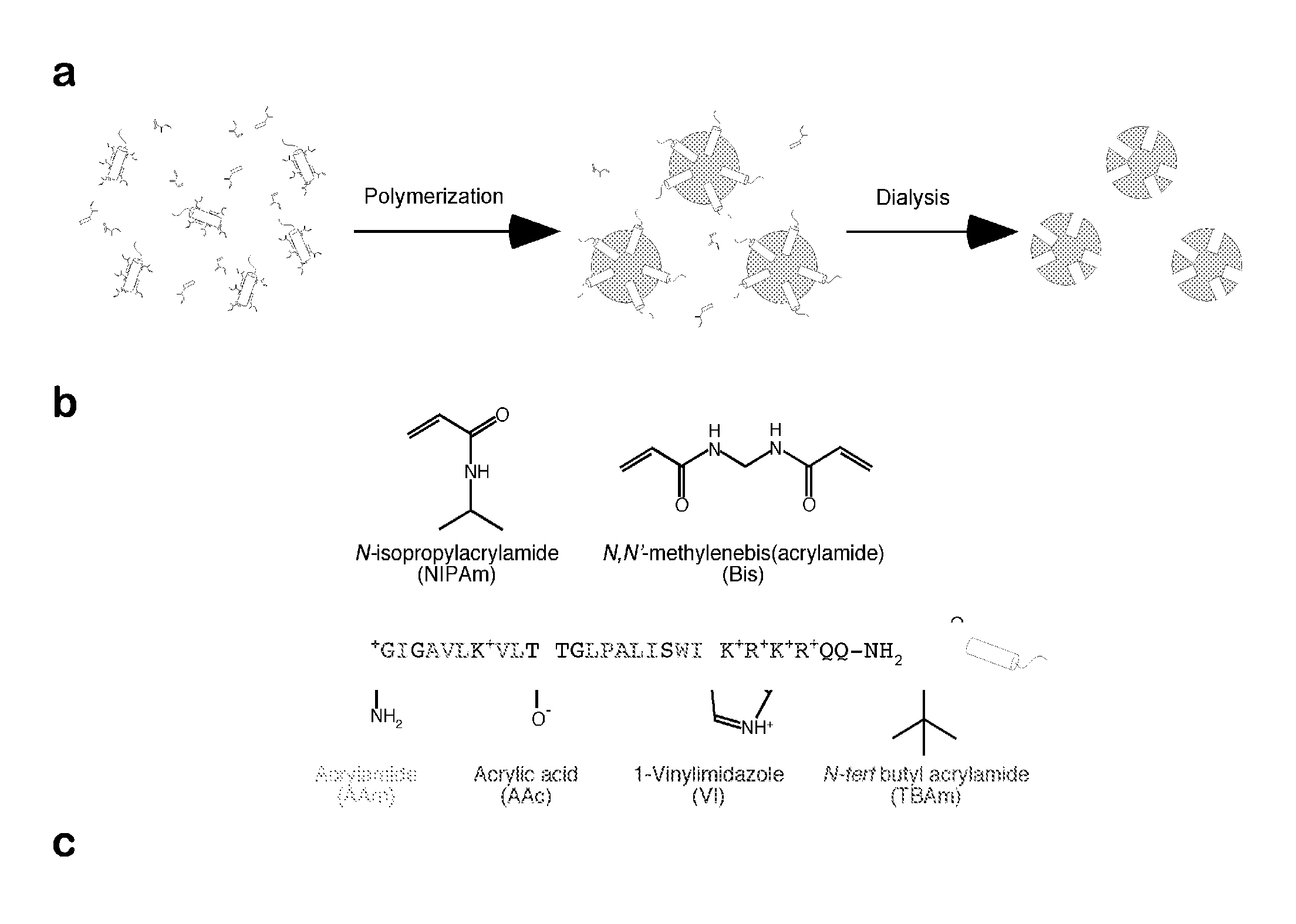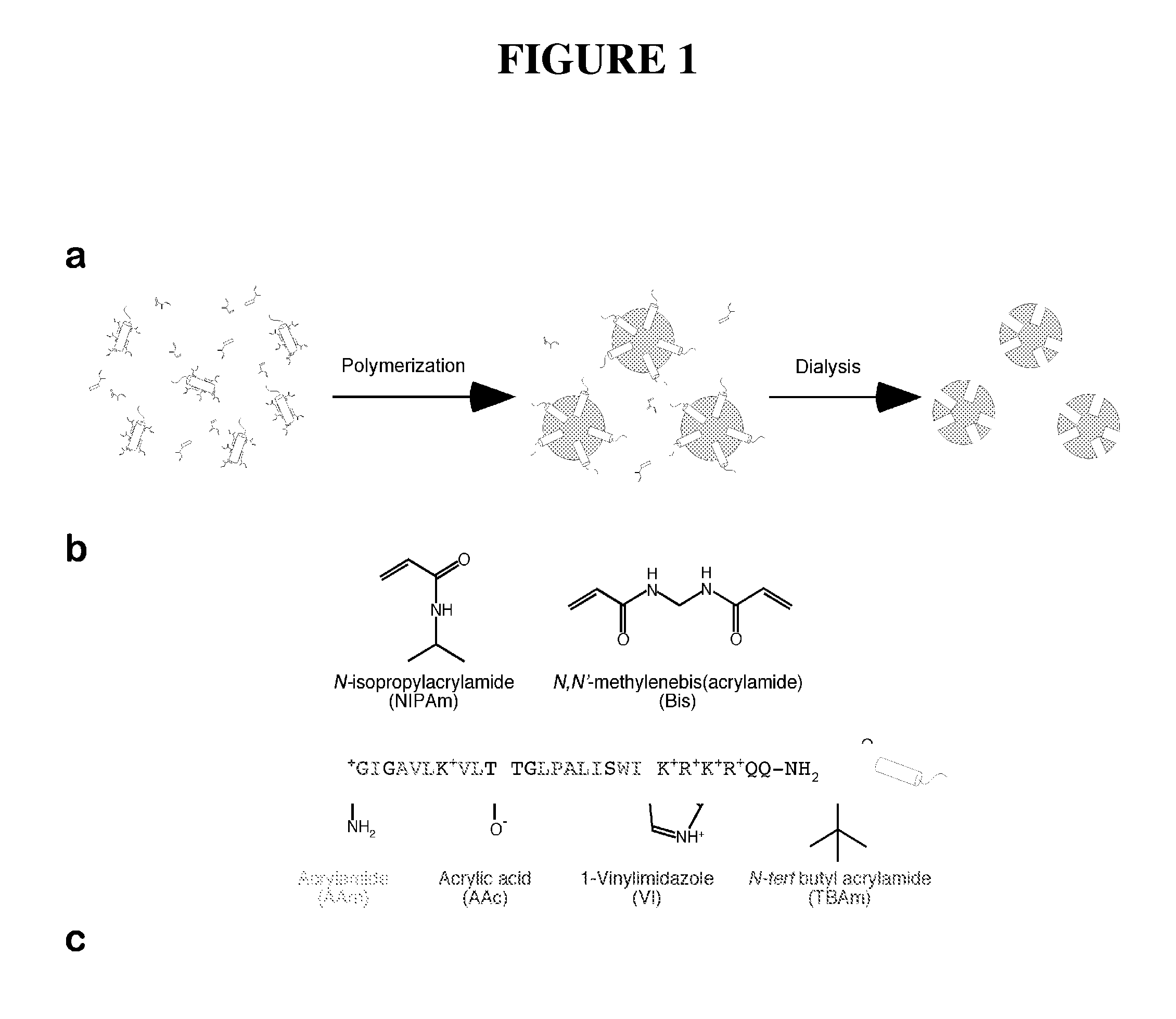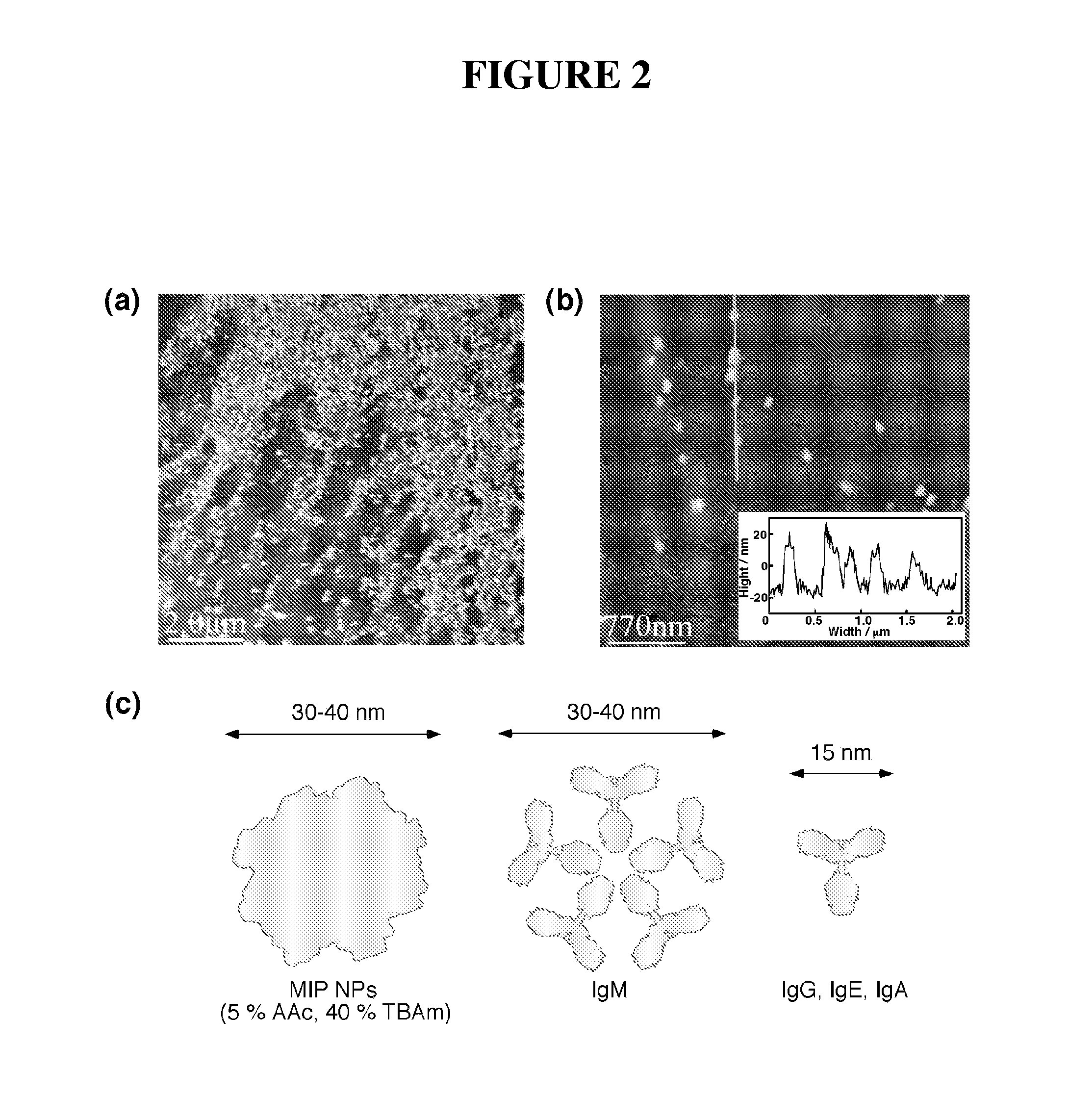Imprinted polymer nanoparticles
a polymer nanoparticle and nanoparticle technology, applied in the direction of peptides, chemical/physical processes, water/sewage treatment by ion exchange, etc., can solve the problems of inability to employ antibodies under all conditions, high cost and time-consuming methods
- Summary
- Abstract
- Description
- Claims
- Application Information
AI Technical Summary
Problems solved by technology
Method used
Image
Examples
example 1
Preparation and Use of Imprinted Nanoparticles
[0073]This example describes the preparation and characterization of imprinted nanoparticles.
Methods
[0074]Preparation of NPs
[0075]Non imprinted nanoparticles (NIP NPs) were synthesized as follows. N-isopropylacrylamide (NIPAm, 98−(W+X+Y+Z)mol %), N,N′-methylenebisacrylamide (MBAM 2 mol %), acrylamide (AAm, W mol %), acrylic acid (AAc, X mol %), vinyl imidazole (VI, Y mol %), N-tert-butylacrylamide (TBAm, Z mol %) and sodium dodecyl sulfate (SDS, 10 mg) were dissolved in water (50 mL) and the resulting solutions were filtered through a no. 2 Whatman paper filter. TBAm (Z mol %) was dissolved in 1 mL of ethanol before addition to the monomer solution, resulting in a total monomer concentration of 6.5 mM. Nitrogen was bubbled through the reaction mixture for 30 min. Following the addition ammonium persulfate (30 mg) and N,N,N′,N′-tetramethylethylenediamine (15 μl), the polymerization was carried out at 23-25° C. for 15-20 hours under a nitr...
example 2
Imprinted Nanoparticles That Bind Antibodies
[0097]This examples describes methods that could be used to generate imprinted nanoparticles that bind the Fc region of antibodies and the use of these nanoparticles to purify a monoclonal antibody such that it could be used therapeutically.
[0098]As a first method, one could employ the Fc region or IgG as an imprinting molecule. In this approach, one could dissolve the Fc region or IgG in polymerization solution with combinations of functional monomers with or without surfactant to form well dispersed nanoparticles. Then resulting solution can be purified by dialysis, chromatography or extraction. Extracted polymer libraries can be examined by QCM, SPR, SDS PAGE or ELISA to quantify affinity to a number of proteins as well as Fc region and IgG. From affinity result, one could identify the best combination of monomers to get highly specific and high affinity nanoparticles. One could then categorize the types of interactions that are necessa...
example 3
Imprinted Nanoparticles for Elimination of Polypeptides
[0101]This examples describes methods that could be used to generate imprinted nanoparticles that bind PMSα peptides, α-hemolysin, anthrax neurotoxins, botulinum neurotoxins, LPS, envelope proteins of HIV, HHV, influenzavirus and hepatitis viruses.
[0102]As an initial target, one could use epitopes of the Staphylococcus aureus α toxin to generate nanoparticles capable of neutralizing the entire protein. A library of synthetic polymer nanoparticles could be created with various combinations of functional monomers and screened against their tendency to aggregate. These particles could then be characterized with DLS for particle size, Z-potential to evaluate surface charge, and lyophilization to measure particle mass and particle yield. The final evaluation could be a screening of hemolytic activity of the material itself and its ability to neutralize a toxin without being imprinted. One could also synthesize epitope imprinted parti...
PUM
| Property | Measurement | Unit |
|---|---|---|
| temperature | aaaaa | aaaaa |
| temperature | aaaaa | aaaaa |
| temperature | aaaaa | aaaaa |
Abstract
Description
Claims
Application Information
 Login to View More
Login to View More - R&D
- Intellectual Property
- Life Sciences
- Materials
- Tech Scout
- Unparalleled Data Quality
- Higher Quality Content
- 60% Fewer Hallucinations
Browse by: Latest US Patents, China's latest patents, Technical Efficacy Thesaurus, Application Domain, Technology Topic, Popular Technical Reports.
© 2025 PatSnap. All rights reserved.Legal|Privacy policy|Modern Slavery Act Transparency Statement|Sitemap|About US| Contact US: help@patsnap.com



